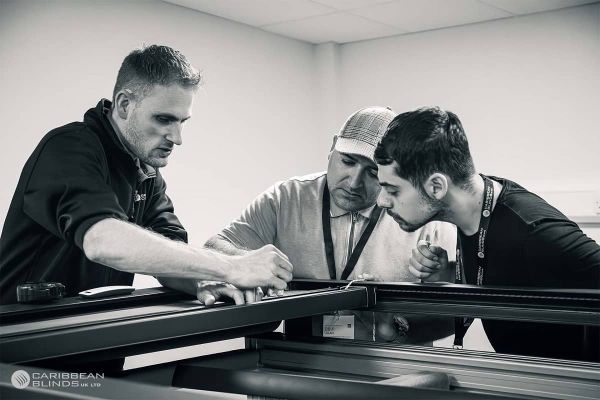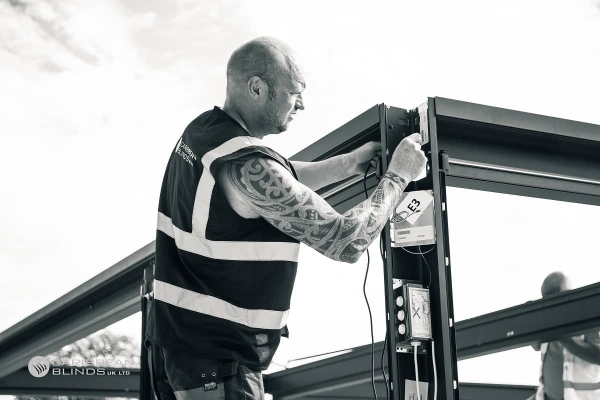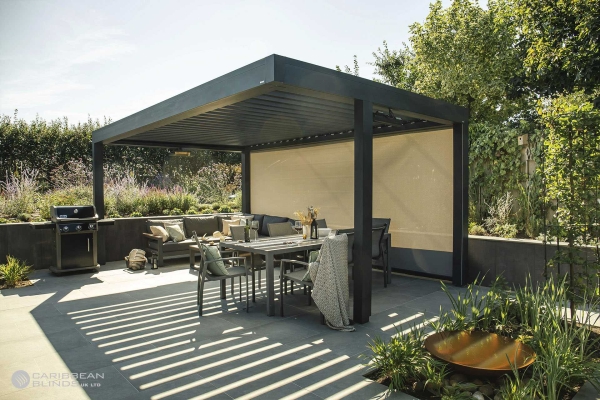Bioclimatic architecture refers to the design of buildings and spaces that share a connection to nature. By taking account of climatic and environmental conditions, the interior of these buildings can achieve optimal thermal comfort.
This term encompasses a number of design and architectural elements, where mechanical systems are used for support, rather than complete dependence. A good example of this is the addition of natural ventilation, such as external roller blinds (see below) that deliver a much more comfortable interior temperature for inhabitants. Unlike air conditioning, along with energy saving, economic and environmental benefits, natural cooling’s main focus is human comfort and well-being.
Here at Caribbean Blinds, we believe by applying proper design, materials and technologies, natural resources can be used to adjust the environmental conditions in a range of buildings. We strive to increase the comfort of buildings whilst utilising bioclimatic design strategies to reduce the overall ecological impact, providing a sustainable and innovative solution both at present and in years to come.
However, whilst the term Bioclimatic may sound like a modern-day development, this isn’t the case. For example, traditional awnings known as ‘Victorian awnings’ have been gracing shopfronts up and down the country since the mid 1800’s. These traditional awnings, fitted to elaborate glass frontages, were used as ‘sunblinds’ to passively cool the interior of buildings at a time when air conditioning was yet to be invented.
In recent years, the popularity of bioclimatic design has evolved considerably, most notably with the introduction of the bioclimatic pergola which we gradually introduced to the UK in 2011. With fully rotating louvres which can be optionally equipped with LED lighting, this pergola system is a modern choice that adds great value to outdoor living areas, whilst enhancing the visual appeal of homes, restaurants, hotels and cafés.
These systems are intended to suit a wide range of outdoor living areas whilst protecting from all types of weather conditions with visual and thermal comfort at the heart of each and every design. There’s no doubt the beauty of the bioclimatic pergola is its versatility, offering the perfect setting for socialising, relaxing or simply spending time with the family.
And, best of all, in the long-term bioclimatic architecture is profitable. In fact, a building can justify investment in just five years when you take the rising energy prices into consideration alongside the shortage of natural resources. Therefore, it’s no wonder bioclimatic designs are becoming an ever-popular choice for businesses wishing to expand their outdoor dining area along with homeowners looking to add kerb appeal to their property.
Click here to see our bioclimatic pergola, the award-winning Outdoor Living Pod in action. Alternatively, complete our quick enquiry form to request a copy of our full product catalogue.




